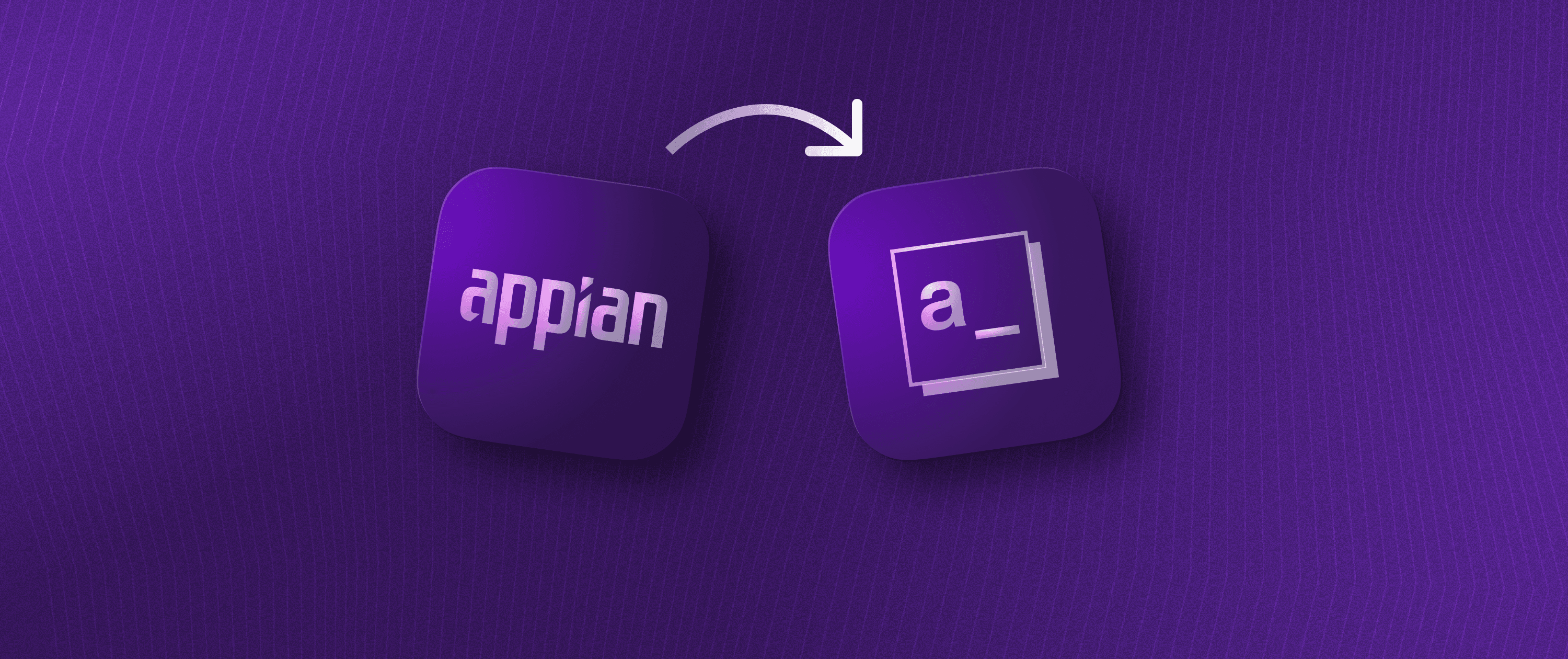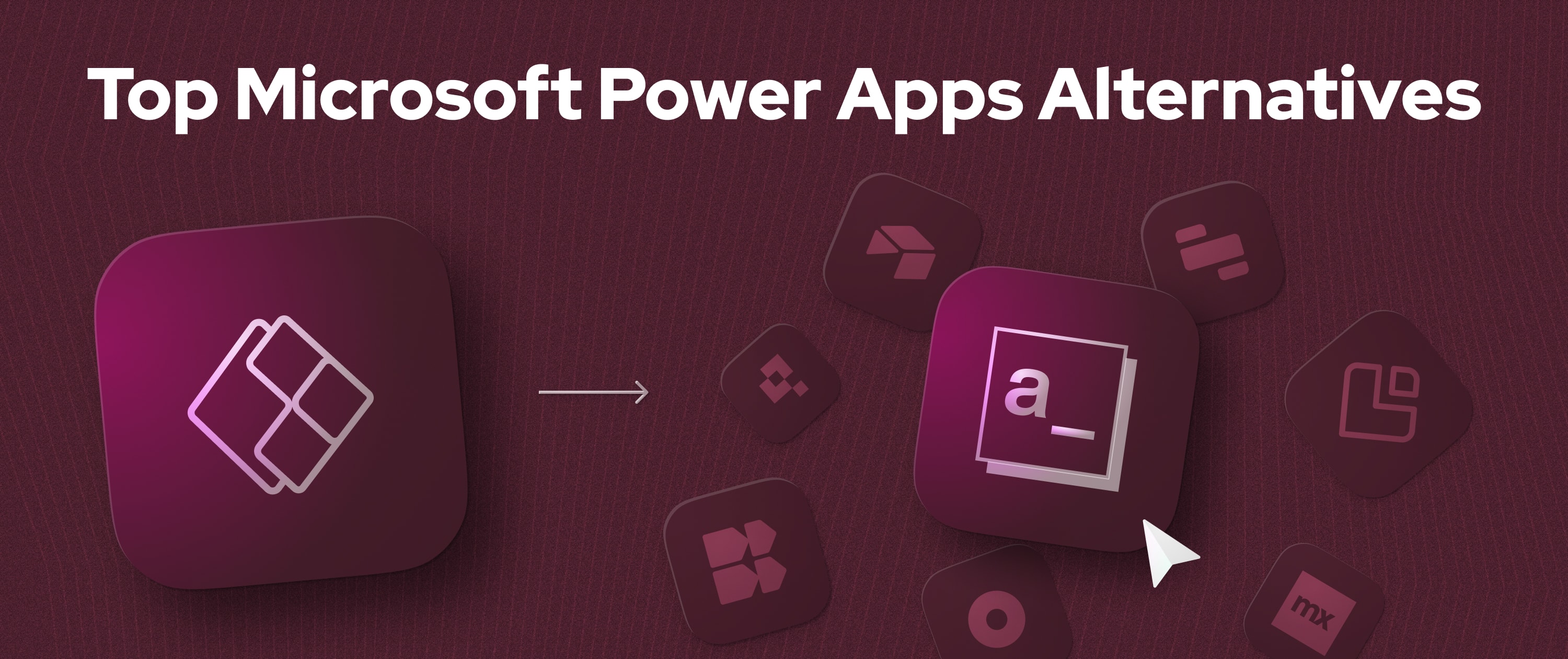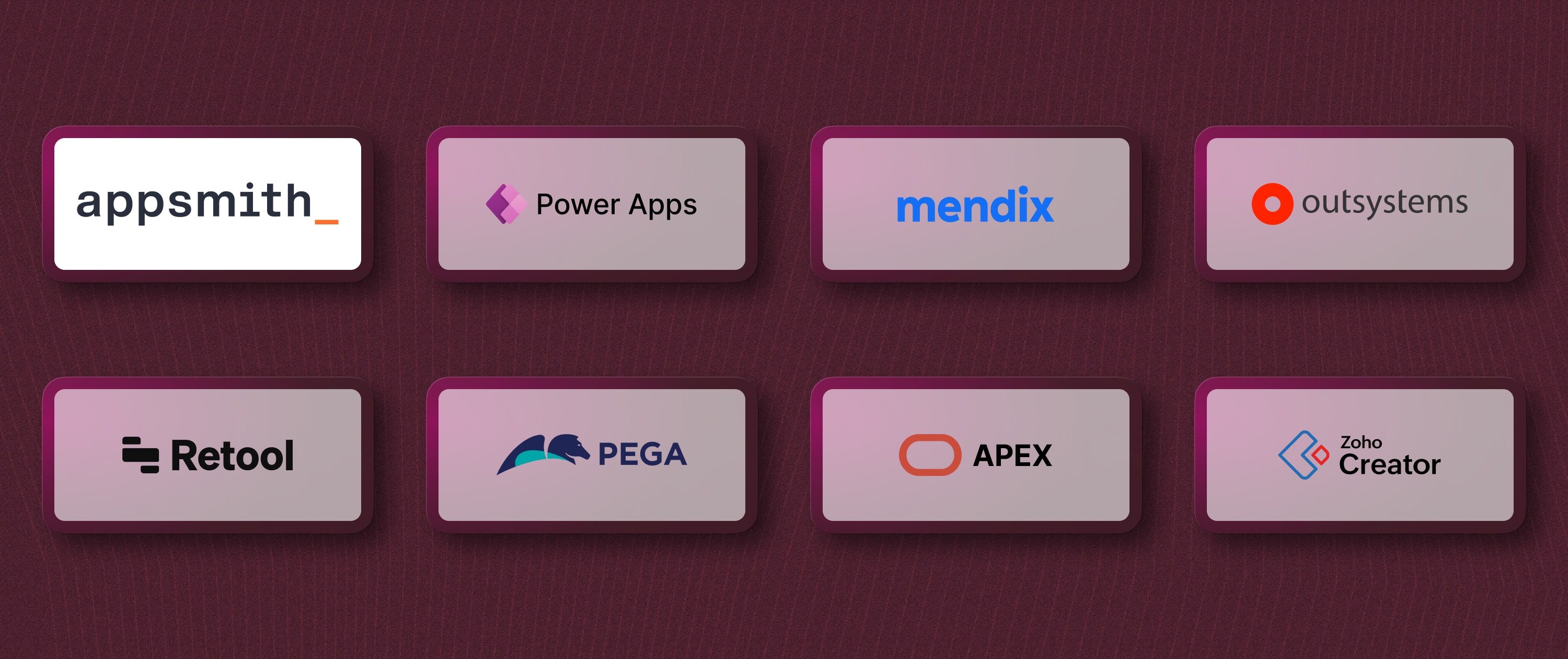Appian Pricing: Plans, Features, and Hidden Costs You Should Know


Are you exploring low-code platforms and considering Appian?
Makes sense. As a veteran in the low-code development space since 1999, Appian brings mature BPM capabilities that few competitors can match.
But what about the price tag attached to all that functionality?
That's where things get murky. Appian sits at a higher price point than newer competitors like Appsmith. And to top it off, Appian keeps their detailed pricing cards surprisingly close to the chest.
Frustrating, right?
We've done the legwork for you. Our blog breaks down Appian’s pricing plans — from the free community edition to the enterprise option — in simple terms. We also compare it with alternatives like Appsmith, OutSystems, and PowerApps to help you decide what’s best for your team.
Ready to clear up all that confusion? Let’s find out what the Appian platform really has to offer.
Overview of Appian’s pricing plans
Let's start things off with an overview of Appian's pricing plans and its offerings. While they don't publicly disclose the exact figures, we've compiled what each tier offers and who might benefit from it the most.
Check out the table below for a quick snapshot of what each option offers. After the table, we'll look closer at the details behind each plan.
Plan | Cost | Key Features | Best For |
Community Edition | Free | - Limited users and features - Great for learning and testing | - Students - Developers wanting to explore Appian - Individuals - Small Teams |
Standard | Custom pricing | - Full access to low-code platform - Mobile app creation - Up to 5 RPA bots - One Portal per app - AI Copilot for developers | - Small to medium businesses - Teams new to low-code development |
Advanced | Custom pricing | - Everything in Standard - Up to 25 RPA bots - Unlimited portals - Process Intelligence - Self-Service Analytics - Enhanced AI skills powered by Generative AI - AI document extraction (20,000 pages/month) | - Growing businesses - Teams with more complex automation needs |
Premium | Custom pricing | - Everything in Advanced - Unlimited RPA bots - Unlimited portals - Process Intelligence - Enhanced AI skills powered by Generative AI - AI document extraction (50,000 pages/month) | - Large enterprises - Organizations with extensive automation requirements |
Our snapshot gives you a quick overview of Appian's range of plans. But wait, these numbers only tell part of the story. The per-user pricing model seems straightforward, but there's more beneath the surface.
For starters, most organizations need more than just the base platform. Want to use Appian for document processing? That'll cost extra. Need advanced AI capabilities? Another add-on. Integration with your legacy systems? You guessed it right — get ready to pay more.
While the lack of transparent pricing might be frustrating, it does allow Appian to curate solutions to specific business needs. However, this approach may not suit everyone, especially smaller businesses with tight budgets or those preferring more straightforward pricing structures. If you're exploring other tools with more transparent pricing and fewer hidden costs, check out our list of top Appian alternatives for more flexible options.
Let's dig in deeper to uncover what you're getting – and what might end up as surprise line items on your invoice.
Appian pricing plans explained in-depth
Let's peel back the layers on each Appian plan to see what you're getting for your money.
1. Free Community Edition
The name says it all — it's free but it comes with strings attached. You're limited to just 10 users, and you can only deploy in Appian's public cloud.
While the Appian Community Edition provides access to core low-code features, it comes with limitations on users and advanced functionalities. No phone support here – just community forums and documentation.
This plan is perfect for learning the basics of Appian and testing its capabilities before committing to a paid tier.
Best for: Startups testing the waters, students learning low-code development, or small teams building simple internal tools. It's perfect for dipping your toes in before taking the plunge.
2. Standard Plan
The Standard Plan is Appian’s first paid tier, your entry point into the "real" Appian experience.
Appian’s Standard Plan offers full access to its low-code platform along with features like mobile app creation, integrations, and up to five RPA bots. You'll get unlimited applications but with basic workflow automation capabilities.
It also includes AI Copilot for developers, enabling faster app creation. This plan suits small to medium-sized businesses that are new to low-code development but need more power than the Community Edition.
Best for: Small businesses or departments handling straightforward processes like HR approval workflows or basic customer onboarding. If your processes rarely change and don't involve complex logic, this might do the trick.
3. Advanced Plan
Building on the Standard Plan, the Advanced tier brings more security and reliability.
The Advanced Plan unlocks additional capabilities such as up to 25 RPA bots, unlimited portals, and enhanced analytics. Phone support kicks in, and it also introduces intelligent document extraction (up to 20,000 pages/month) and case management tools.
Best for: Growing companies with more complex workflows. If you're handling sensitive data or need to extract information from documents automatically, this plan makes sense. It's the sweet spot for many mid-sized businesses.
4. Premium plan
The Premium Plan offers everything in the Advanced tier but scales up automation capabilities significantly.
You'll get real-time analytics, unlimited RPA bots, process optimization tools, and advanced AI capabilities like document extraction for up to 50,000 pages per month. This plan is designed for large enterprises that handle extensive workflows and require robust automation tools.
Best for: Larger organizations running complex, mission-critical processes. If you need to continuously optimize workflows and want AI-powered insights, this is the plan for you. Manufacturing companies, financial institutions, and healthcare organizations often land here.
5. Enterprise plan
The top tier comes with all the bells and whistles – and a price tag to match.
Your dedicated success manager ensures you maximize platform value. White-glove implementation means Appian experts will build your first applications with you. This is Appian’s most comprehensive offering, designed for massive operations that require tailored solutions.
It includes all Premium features alongside dedicated support options and deployment flexibility (cloud, hybrid, or on-premises). Pricing is negotiated based on specific business needs.
Best for: Large enterprises with complex integration needs and demanding security requirements. If you're running business-critical processes that can't fail, or operating in heavily regulated industries, you'll need this tier.
Cut Your Costs, Not Your Capabilities
If high licensing fees make you hesitate, try Appsmith’s affordable low-code process. Build robust internal apps without extra surprises.
Key user profiles across Appian pricing plans
Who actually uses each Appian tier?
Different teams and roles will find value in other plans. Let's break it down by the real people behind the purchase orders.
Casual users and small startups may begin with the Free Community Edition to learn the basics.
Small to mid-sized teams often choose the Standard Plan to keep projects moving without extra cost.
As teams grow and their needs become more specialized, the Advanced and Premium plans offer the extra power they require.
Large enterprises with intricate workflows typically opt for the Enterprise Plan, benefiting from custom setups and dedicated support.
Matching your team profile to the right plan saves headaches— and dollars —down the road. Start with what you need today, but keep an eye on tomorrow – upgrading is more straightforward than rebuilding from scratch when you outgrow your initial choice.
But what if that nagging feeling in your wallet is trying to tell you something? Considering its steep pricing, Appian does demand a serious commitment. Do you find yourself asking: "Is there a way to get similar functionality without the enterprise-level price tag?"
Then, we think it’s time to compare the Appian platform and its offerings with other leading low-code development platforms like Appsmith and Microsoft Power Apps.
Build Apps Without Breaking the Bank
Why pay enterprise-level prices when you can get the same functionality at a fraction of the cost? Appsmith’s transparent pricing helps you focus on creating software that works.
Appian’s pricing vs. Competitor pricing
When you compare Appian alternatives like Appsmith with other low-code platforms, the cost difference becomes hard to ignore, especially as your team scales.
Let's compare the pricing plans and features in detail to determine what you get for your money.
Feature | Appian | Appsmith | OutSystems | Microsoft Power Apps |
Free Plan | Yes, Community Edition available | Yes, an Open-source platform is available | Free trial only | Free developer edition |
Plan Price Range | Custom Pricing | $0 to $15 per user per month | Starts at $36,300/ year | $12 to $20 per user per month |
Pricing Approach | Per user, per month, per app | Simple user-based pricing | Traditional enterprise model | Standard user-based licensing |
Max Users for Free Plan | Up to 15 users | Up to 5 users | Up to 100 internal users | Up to 3 developers |
Max Users for Paid Plan | Unlimited users (varies by plan) | Unlimited users | Unlimited users (varies by plan) | Unlimited users |
Integration Options | Extensive enterprise and cloud integrations | Comprehensive API and database connectors | External system integrations | Microsoft ecosystem focused |
Built-in JS Editor | No | Yes | Yes | No |
Support | Community (free), priority support on premium tiers | Community (free), email/chat (higher tiers) | Professional support on higher tiers | Priority support on premium tiers |
How does Appian stack up?
Looking at the comparison table above, a few key points stand out about the Appian platform compared to its competitors.
Yes, Appian excels at business process management (BPM) with its unified platform approach. Their automated workflow capabilities help business users streamline complex processes across multiple data sources. But this all comes at a steep cost, priced per user at rates that make finance departments wince.
OutSystems offers similar enterprise-grade functionality, but with a higher price tag, while Microsoft Power Apps provides familiar territory for organizations already invested in their ecosystem.
Then there's Appsmith – the open-source contender that's changing the game. With no token limits, unlimited users, and a built-in JS editor, it provides development teams the flexibility they need without breaking the bank.
For companies wary of vendor lock-in who need a dedicated platform instance without the high enterprise-level investment, Appsmith makes for a compelling alternative to Appian.
Add-on costs & hidden fees of Appian pricing plans
Appian’s pricing structure, while flexible, includes several add-on costs and hidden fees. Let's pull back the curtain on what your final invoice might actually look like.
1. The user conundrum
The "priced per user" model sounds simple until you realize there are different user types:
Standard user: Basic access that gets you started, but with significant limitations on what you can build and run.
Advanced user: More capabilities, but still restricted from premium features.
Premium user: Full platform access at the highest price point.
Many businesses discover they need to upgrade more users than initially planned, especially when processes expand across departments.
2. Beyond basic functionality
The Appian Community Edition makes you think the whole platform will be just as straightforward. But as your business needs grow, so do the add-ons:
Intelligent document extraction: Built-in page limits that quietly tick up costs when exceeded.
Data sources: The standard tier limits you to a limited number of connections. Need more? That's an upgrade.
RPA bots: Limited number of bots per app in Standard and Advanced plans. Additional bots beyond the included allotment incur extra charges.
Token limits: AI capabilities come with strict usage caps. Go over them, and watch your bill climb.
What happens when you breach your limits or require additional tokens? How much will it cost? These are all questions you should ask when finalizing your deal with the Appian sales team.
3. Deployment dilemmas
You have choices, but they all cost differently:
Cloud customers: Get a dedicated Appian platform instance with the Appian Cloud Database included, but SLA guarantees vary by tier.
On-premises deployment: Shifts costs to your infrastructure, requiring additional investments in hardware and maintenance.
Self-managed scenarios: Require expertise, which often requires hiring specialized talent or consultants.
The pricing pages don't make it clear that self-managed customers face different licensing rules, especially for automated processes and RPA functionality.
4. Hidden long-term costs
Here's where the costs for the Appian platform add up:
Vendor lock-in: Once your business processes run on the Appian platform, migration becomes costly and complex.
Portal limitations: Need customer-facing portals? Additional fees apply beyond the first one.
High availability options: Business-critical applications need redundancy. Again, this is available in the premium plans, it’s not included in base fees.
5. The real cost of "guarantees"
The Appian Guarantee promises that your first application deployment will be within eight weeks. What's not apparent is that this requires their professional services team—another line item on your invoice.
When you view all the possibilities of additional charges and the limited functionality of the base plans together, you’ll realize that the total entitlement cost will exceed your initial expectations.
Before contacting sales, factor these hidden fees into your budget. Otherwise, a reasonable investment in a development platform might balloon into something your finance team won't approve.
On that note, if you and your team are seeking more predictable pricing, minus all the hidden fees and hassle that follow, you should check out Appsmith. Our platform offers transparent, usage-based pricing plans without sacrificing any essential functionality.
Redefine App Development Affordably
High costs shouldn’t slow your progress. Appsmith provides an intuitive environment with a transparent pricing structure, perfect for teams that want to focus on building.
Is Appian worth the price?
We have already gone over Appian, its pricing structure, and its competitors in detail. Let’s take on a different approach and look at Appian through the lens of real-life users. It’ll help us understand if its pricing truly delivers value.
Let's examine what actual customers say about their experience.
“”Appian lacks elastic scalability, especially for builds that receive dynamic traffic from customers and internal users. Appian is also quite expensive compared to other competitors in recent times.
Lastly, Appian is still quite limited in mobile app development and deployment. Appian support is average, as the issue ticketing system would be better if it could offer live support. — Verified User in Financial Services
“”I cannot easily and succinctly explain their licensing cost. It's cost per user, unless it's not. It's X price, unless you want to use the new app they're marketing.
In addition, it can be difficult to develop and test custom plugins and components. —Verified User in Computer Software
These testimonials highlight a few issues worth considering:
Pricing transparency problems — customers struggle to understand what they're paying for
Scalability constraints that may require additional spending
Technical limitations around mobile development
Support quality that doesn't match premium pricing
Complicated licensing models that create budget uncertainty
For organizations with straightforward needs and stable user bases, Appian may deliver adequate value. However, companies requiring flexible scaling, clear pricing structures, strong mobile capabilities, or premium support may find the cost-to-value ratio disappointing.
These G2 reviews suggest that Appian works best for established enterprises with predictable usage patterns and dedicated development teams who can navigate its complexities. For others, particularly growing businesses — the price tag may exceed the practical benefits.
Does Appian fit your bill?
Appian may be a solid choice for large enterprises with substantial budgets, dedicated IT teams, and needs that align with complex business process management. If you're part of a Fortune 500 company with extensive resources and time for implementation, Appian might work for you.
But let's be real, most businesses, even large enterprises, look for flexible, cost-effective low-code platforms that avoid pricing complexity and technical barriers.
If you're a growing company watching your budget, a startup building internal tools, or any organization seeking more transparent pricing and faster implementation, look elsewhere.
The scalability limitations, confusing licensing structures, and limited mobile capabilities often make Appian a challenging investment to justify.
Why pick Appsmith instead?
Appsmith offers an open-source, user-friendly, low-code platform that eliminates many of the hidden fees associated with Appian. Here are some of Appsmith’s compelling advantages that address many of Appian's limitations:
Open-source flexibility: Appsmith's open-source nature eliminates vendor lock-in worries and gives you complete control over your applications
Straightforward pricing: Say goodbye to confusing licensing models with Appsmith's transparent, user-based pricing starting at just $15 per month per user
Quick setup and learning curve: Get up and running fast with Appsmith's intuitive interface, compared to Appian's complex implementation, requiring professional services
Modern development features: Enjoy AI-assisted development and intent-based auto layouts that make building interfaces more straightforward and more efficient
Strong customization options: Make the most of 45+ drag-and-drop widgets, 18+ native integrations, and a built-in JavaScript editor that puts you in control
Git-based version control: Collaborate seamlessly with built-in Git integration for better team coordination and development workflow
Self-hosting options: Choose between cloud hosting or self-hosting based on your organization's specific needs and compliance requirements
Last but not least, our Appsmith community speaks volumes about its value, trusted by over 100,000 developers across 150 countries, with more than 36,000 GitHub stars and a thriving Discord community of over 9,000 members. Leading organizations, including GSK, AWS, and ByteDance, have already discovered how Appsmith transforms their internal tools development.
Get ready to accelerate your development efforts and reduce hidden costs. Book a demo with Appsmith to find out how this open-source platform can help you build your internal tools in no time.
Your Low-Cost, High-Value Development Partner
Appsmith replaces complex fee structures with a transparent, per-user pricing system. Enjoy powerful app-building tools without the risk of vendor lock-in.
Frequently asked questions
What is Appian’s pricing model?
What is Appian’s pricing model?
Appian pricing is subscription-based, calculated on a per-user, per-month, per-app basis. Costs vary depending on the tier and features selected.
How does Appian’s pricing model differ from Appsmith’s?
How does Appian’s pricing model differ from Appsmith’s?
Appian is priced per user and app with custom quotes, while Appsmith offers user-based pricing starting at $15 per month.
What does the free version of Appsmith offer?
What does the free version of Appsmith offer?
Appsmith’s free community edition provides a personal development environment ideal for testing and building internal apps.
How does Appian's cloud SLA compare to Appsmith's?
How does Appian's cloud SLA compare to Appsmith's?
Appian's cloud SLA offers 99.9% uptime guarantees on higher-tier plans but often comes with additional costs. Appsmith provides comparable reliability with more transparent pricing.
Does Appian support email and document classification?
Does Appian support email and document classification?
Yes, Appian lets you integrate email and document classification to automate your low-code processes.
Does Appian provide training resources?
Does Appian provide training resources?
Yes, Appian offers training through its Academy and Community resources to help users master the platform and accelerate development efforts.
Can I self-host applications with Appsmith?
Can I self-host applications with Appsmith?
Absolutely. Its open-source nature allows self-managed deployments and full control over your software environment.
What support options are available for completing complex projects?
What support options are available for completing complex projects?
Appian provides premium support with dedicated teams, and Appsmith benefits from a vibrant community and extensive documentation.
How is file management handled by these solutions?
How is file management handled by these solutions?
Appian manages file integrations within its robust data fabric, and Appsmith’s native connectors make it simple to integrate and manage files across your applications.
Can I switch from Appian to Appsmith without rebuilding my applications?
Can I switch from Appian to Appsmith without rebuilding my applications?
While complete 1:1 migration can get tricky, Appsmith's flexible platform and open-source nature make transitioning easier than moving to other low-code process platforms.


